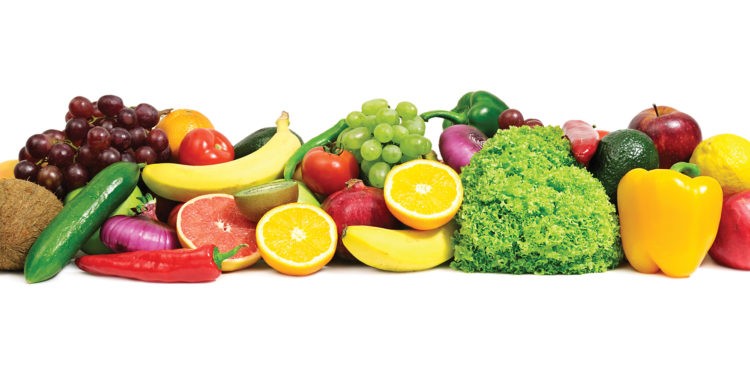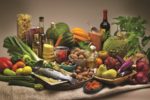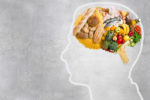What’s the State of Your Plate?

September is Fruit and Veggies More Matters Month
You didn’t eat anywhere near enough fruit and veggies today, I am sure of it. I can say that with 87% accuracy, according to statistics provided by the Centers for Disease Control and Prevention (CDC), and soundly seconded by moms and physicians nationwide.
Shockingly, only a tiny fraction of United States citizens, 12%, eat enough fruits to meet the minimum daily requirements of one and a half to two cups per day. Even worse, only 9% of Americans meet the minimum daily recommendation of two to three cups per day.
The study, Surveillance of Fruit and Vegetable Intake Using the Behavioral Risk Factor Surveillance System, confirms what physicians have been saying for years, Americans do not eat their veggies. The research, which broke out groups of Americans by state, class, race, and gender found that some subgroups were even less likely to eat enough produce.
The findings revealed that men, young adults, and people living in poverty all had especially low rates of produce intake. For example, while 15.1% of women meet the dietary recommendations, only 9.2% of men do the same. Likewise, 11.4% of high-income Americans get enough fruit and vegetables while only 7% poor Americans do the same.
How Does Kansas City Fare?
In Kansas, 41.4% of adults report consuming fruit once per day and 22.2% reports consuming vegetable once per day. In Missouri, 43% report eating fruit and 25.2% report eating vegetables once per day. Admittedly, there is room for improvement. To put the statistics into perspective, Alaskans had a higher median intake of both fruit and vegetables than both Kansas and Missouri where fresh produce is far more readily available.
We can’t feel too down, though. Despite producing a sizable majority of many American fruits, and vegetables: 99 percent of artichokes, 97 percent of kiwis, 97 percent of plums, 95 percent of celery, 95 percent of garlic, 89 percent of cauliflower, 71 percent of spinach, and 69 percent of carrots (and the list goes on and on), and with citrus yields per acre no other state can match, Californians did not do much better.
Let Them Eat Fruit (and Veggies!)
“Five portions a day” has been a standard refrain when recommending how much fruit and vegetables one should eat daily, but perhaps that should change. Scientists at Imperial College London which analyzed 95 studies on fruit and vegetable consumption found that more is even better.
They discovered that although the recommended five portions of fruit and vegetables a day did indeed reduce disease risk, the greatest benefit came from eating 10 portions a day.
The study, which was a meta-analysis of all available research in populations worldwide, included up to 2 million people, and assessed up to 43,000 cases of heart disease, 47,000 cases of stroke, 81,000 cases of cardiovascular disease, 112,000 cancer cases, and 94,000 deaths.
Published in the International Journal of Epidemiology, the study estimates approximately 7.8 million premature deaths worldwide could be potentially prevented every year if people ate 10 portions of fruit and vegetables a day.
The study states that a daily intake of two and one-half portions is associated with a 4% reduced risk in cancer, and an 18% reduced risk of stroke, 13% reduced risk of cardiovascular disease, and a 15% reduced risk of premature death.
Further benefits were observed with higher intakes. Eating 10 portions daily was associated with a 24% reduced risk of heart disease, 33% reduced risk of stroke, and 28% reduced rate of cardiovascular disease. Eating 10 portions daily also saw a 13% reduced risk of total cancer and a 31% reduced risk of premature death.
A National Problem and a National Mindset
Though, according to the Produce Marketing Association (PMA), consumers are eating more fruits and vegetables than they did five years ago, studies show real barriers to attaining fresh produce for many across the nation. There are far fewer places to buy fresh produce in lower income areas than in higher income areas, for example.
But there is a far bigger problem— our national food mindset.
According to the Yale Rudd Center for Food Policy & Obesity, we spend far more marketing fast food and processed foods than healthy foods such as fresh produce. They state that in 2012 the fast food industry spent $4.6 billion to reach children and teens promoting mostly unhealthy food and beverages. One fast food giant spent 2.7 times as much to advertise its products ($972 million) as all fruit, vegetable, bottled water, and milk advertisers combined ($367 million).
Half of All U.S. Produce is Thrown Away
Startling new research uncovers another problem. The national demand for “perfect” fruit and vegetables means as much of half our yield is discarded, not meeting unrealistic (and unyielding) industry cosmetic standards.
All across the nation, high-value and nutritious produce are sacrificed all along the chain from farm to table. Much is left in the field to rot as farmers cannot afford to invest in harvesting what will be rejected. This contributes to the deepening hunger and poverty in the U.S. as well as to our increasing dependency on fast and processed foods.
It’s Time to Change
Clearly, it’s time for Americans to rethink what we put on our plates and how to make that happen. The Alliance for Food and Health suggests taking a mission-minded approach to increasing our national fruit and vegetable intake. The AFH takes a multi-stakeholder approach to engage cross-sector solutions and recommends harnessing multi-sector support to close knowledge gaps, expand partnerships that eliminate food waste and extend accessibility to fresh produce.
Considering the vast and positive impact fruit and vegetables have on our health, we at Healthy Kansas City magazine want to encourage our readers to continue this conversation and share your diverse and complementary knowledge to encourage healthier eating habits.
Resources: Surveillance of Fruit and Vegetable Intake Using the Behavioral Risk Factor Surveillance System, Yale Rudd Center for Food Policy & Obesity and Alliance for Food and Health






